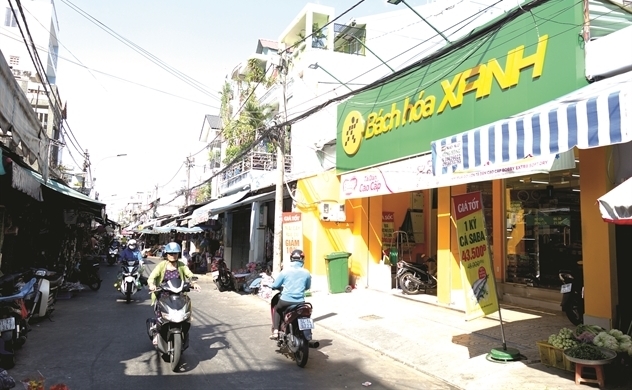According to Nielsen, Vietnam has 1.4 million groceries and 9,000 traditional markets, holding 75 percent of the retail market share with revenue of $10 billion a year.

Vietnam has 1.4 million groceries
Vo Tan Thanh, director of VCCI (Vietnam Chamber of Commerce and Industry) HCMC Branch, cited a report of the General Statistics Office (GSO) as saying that retail turnover was $143.3 billion in 2018 and predicted that the figure would be $160 billion by 2020.
Meanwhile, according to Kantar Worldpanel, traditional retail channels now satisfy 85 percent of people’s demand. Nine out of every 10 surveyed consumers, or 92 percent, said they prefer buying essential goods at groceries.
However, though still dominating the retail market, traditional markets now feel pressure from modern retail chains. VinMart, Circle K, FamilyMart, Co-op Smile, Satrafoods and Bach Hoa Xanh are present in every residential quarter and satisfy people’s daily essential needs.
|
There are many problems that traditional groceries have to solve. They have to find suitable solutions to offline and online sale management support and omni-channel inventory management. They need to complete orders quickly and make this manageable on mobile platforms. |
There are many problems that traditional groceries have to solve. They have to find suitable solutions to offline and online sale management support and omni-channel inventory management. They need to complete orders quickly and make this manageable on mobile platforms.
The death of the G7 March chain developed by Trung Nguyen with reportedly huge capital of trillions of dong shows the difficulties in ‘modernizing’ traditional groceries.
Experts said there are many sale management software products available for GT (general trade) groceries.
Sapo X provides software that manages the sale at shops and chains. KiotViet, utilizing cloud computing, allows accessing sales data anywhere and at any time. Some days ago, BB Vietnam launched BBLink, a distribution platform.
According to Vincent Lu, strategic director of BBLink, the problems of traditional retail channel are high initial investments, high operation costs, and difficulties in distribution efficiency measurement.
Offering solution to the problems, BBLink is suited to traditional groceries and sales agents throughout the country.
A representative of Sapo X said once business activities can be synchronized, businesses would be able to cut 30 percent of management costs and 70 percent of system building.
He said the retail industry has been changing rapidly all over the globe, including Vietnam, where buyers use different internet connecting devices. Therefore, sellers need to be present on many channels to access more clients.
Nguyen Ngoc Dung from Vecom noted that modern retail channels such as websites and e-commerce marketplaces are developing strongly but they only make up 20 percent of total turnover.
The development of multitasking distribution platforms at traditional retail channels is needed.
RELATED NEWS
Billionaires scramble for $5 billion drug market
Convenience store chains expand rapidly in big cities
TBKTVN
 The hot development of modern retail channels are threatening variety stores and traditional markets.
The hot development of modern retail channels are threatening variety stores and traditional markets.